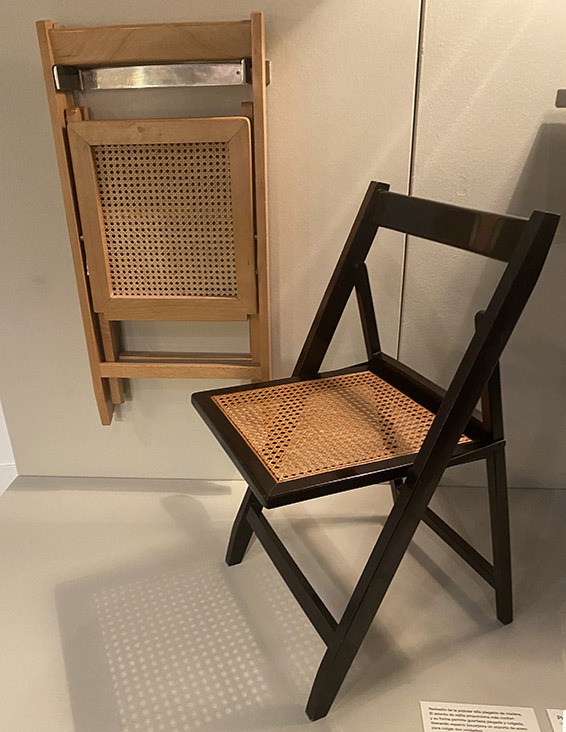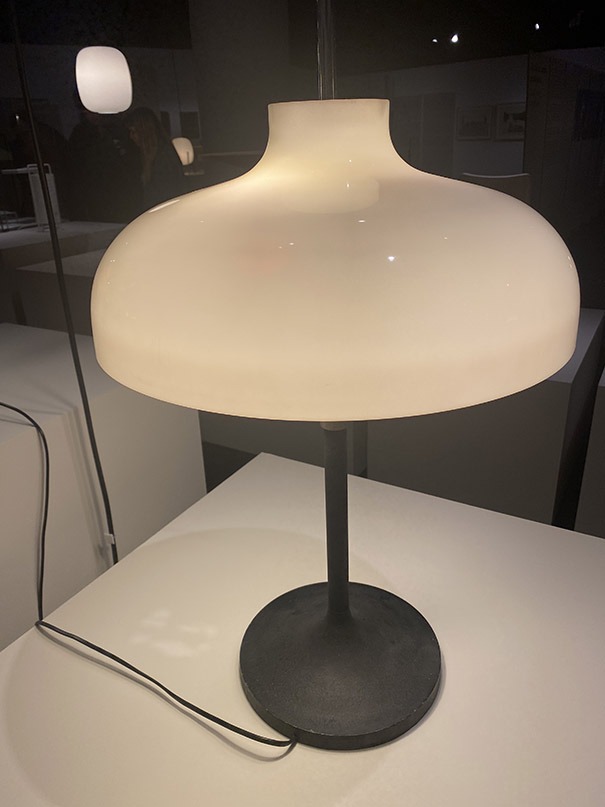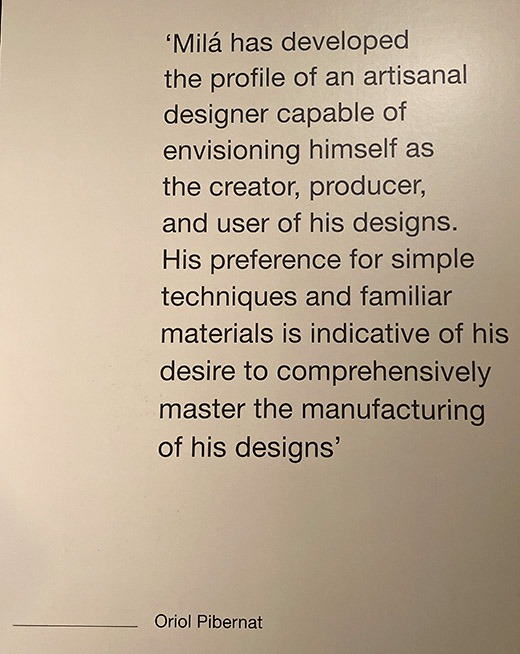
The TN Lamp
As part of Madrid Design Festival I visited the biggest retrospective of the Catalan designer: Miguel Milá. Diseñador (pre)industrial with over 200 pieces including prototypes and drawings.
For Miguel Milá (Barcelona 1931), craft and function come together in his instinctive way of working. The artisan loved working with tool in hand and using materials that are commonplace and sustainable. His designs were most often conceived at home as a solution to a problem or a request from a friend or relative for a much needed item. His first lamp being for his Aunt Nuria who wanted a reading lamp that also illuminated the entire room. Or the glass table that allows the rug it sits upon to be seen.

Milá’s childhood toolbox
Early life
As a child Miguel and his siblings were given a toolbox by their mother, in that post war period of austerity it was normal to repair and make things and in this spirit of sustainability Miguel set up his first business Calle TRAMO – short for Trabajos Molestos (chores) to do small jobs for his older siblings. It was this endeavour that honed his talent for noticing defects in everyday objects or something lacking and he learnt the technical skills to solve these problems.

Education and Career Beginnings
After completing his education in Industrial Design at the Escuela Técnica Superior de Arquitectura de Barcelona, he began his professional career collaborating in the office of architects Alfons Milà (his brother) and Federico Correa. Then in 1956, he founded his own design studio, an adult version of TRAMO where he experimented with materials and techniques, pushing the boundaries of traditional design conventions. Milá’s commitment to craftsmanship and his innovative approach quickly gained recognition within the design community, setting the stage for a prolific career.

Humble craftsmanship
Preferring not to use moulds in his production process as he believed “a mould ultimately enslaves you,” his attachment to craftsmanship is what sets him apart. Attentive to the dignity of work – creating, experimenting and adjusting in his workshop, he even made a door for the storage of his collection of tools. These tools together with his economy of resources based approach and a rejection of affectation and waste led him to create many pieces in Rattan.
At this time Spain was in a crisis and possessed limited industrial or economic resources. Consequently, he sought the expertise of local blacksmiths, carpenters, and craftsmen proficient in working with rattan.

Foldable Rattan chairs
He designed the instantly recognisable “Cesta” lamp, in 1962, when he came across a glass globe which he resolved to fit into a rattan basket. Influenced by Japanese lanterns and easily portable by the addition of a handle it is a design that has been imitated many times.

The Cesta Lamp
“My advocacy of craftwork and, generally, the whole craft process in this time we live in is simply so as to assert man’s right to participate in the process of things.”
Legacy and Influence
Miguel’s philosophy of “less is more” and his emphasis on elegant craftsmanship continues to influence others. Especially outstanding in the field of lighting his dedication to form and function makes him a true pioneer of modern design.








